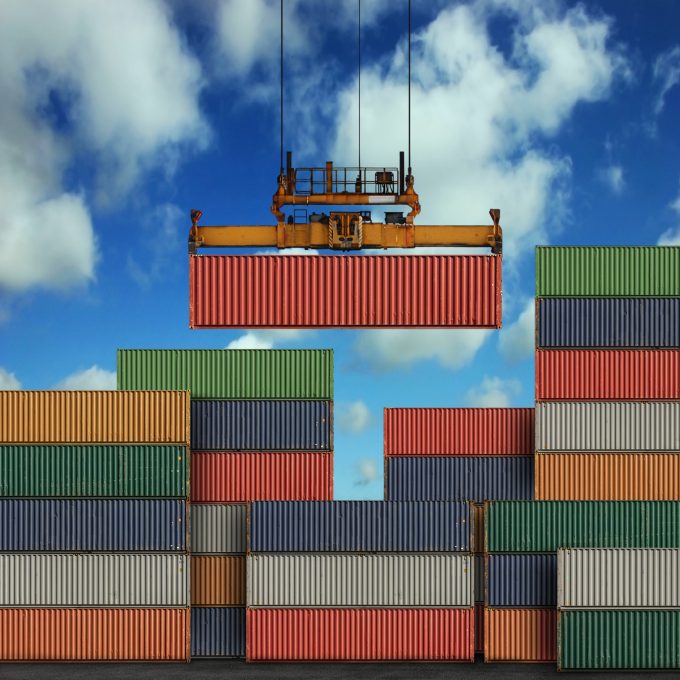Bangladesh looks at demurrage waiver as containers pile up in Chittagong
The Chittagong port yards now have close to 40,000 teu of containers, mainly loaded with ...
TFII: SOLID AS USUALMAERSK: WEAKENINGF: FALLING OFF A CLIFFAAPL: 'BOTTLENECK IN MAINLAND CHINA'AAPL: CHINA TRENDSDHL: GROWTH CAPEXR: ANOTHER SOLID DELIVERYMFT: HERE COMES THE FALLDSV: LOOK AT SCHENKER PERFORMANCEUPS: A WAVE OF DOWNGRADES DSV: BARGAIN BINKNX: EARNINGS OUTODFL: RISING AND FALLING AND THEN RISING
TFII: SOLID AS USUALMAERSK: WEAKENINGF: FALLING OFF A CLIFFAAPL: 'BOTTLENECK IN MAINLAND CHINA'AAPL: CHINA TRENDSDHL: GROWTH CAPEXR: ANOTHER SOLID DELIVERYMFT: HERE COMES THE FALLDSV: LOOK AT SCHENKER PERFORMANCEUPS: A WAVE OF DOWNGRADES DSV: BARGAIN BINKNX: EARNINGS OUTODFL: RISING AND FALLING AND THEN RISING

Despite the glut of equipment and falling freight rates, shipper-owned containers (SOCs) may be more cost-effective than renting those owned by carriers.
Consultancy Container Xchange, in its annual survey, suggests this is because of scarce equipment in inland locations and SOCs not being subject to unexpected demurrage and detention fees.
As with its previous surveys, Container Xchange went undercover, posing as a forwarder to enquire about SOC and COC rates for moving logs between China’s Ningbo and European ports.
Of the carriers approached, 82% could offer both SOC and COC rates; the 18% which would only offer COCs did so because they did not work with SOCs or were unaware of them.
Liner operators receptive to SOCs were Wan Hai, Yang Ming, HMM, TS Lines, ONE, SITC, Sinokor, Tailwind, SeaLead, Transfar, Emirates and Samudera. Among forwarders contacted, 36 knew about SOCs, three times the number in 2019.
While some COC quotes seem attractive at first glance, shippers are quoted an all-in price for ocean freight that includes the use of the container and the slot on the carrier’s vessel. However, the SOC quote is just for the slot.
Container Xchange was quoted $500 for a 40ft container, for both SOCs and COCs, but explained: “One of the biggest perks of using an SOC is avoiding detention fees, while COCs are prone to them, especially when shipping to hinterland locations or when there are expected delays from geopolitical events.
“If cargo is shipped into a location with a deficit of containers, the carriers should be more than willing to get more of their own equipment into that location,” said Container Xchange. “In that case, you should also be able to get their equipment at a good rate, making COC the better choice. But if your shipment goes to a surplus location, the carriers and container owners might charge a higher price.
“They have no interest in paying for storage and repositioning the containers in the port of destination. If you still want to go there, it might be easier to bring your own container, so the carrier doesn’t have to deal with it.
“The same applies to the equipment situation in your pick-up location. If you want to ship cargo from a container surplus location, carriers are willing to give them to you at a bigger discount, as you’re helping them avoid empty container moves. You should get a good price if you aid NVOCCs in repositioning their empty equipment, as even they have to pay for moving empty containers with shipping lines.”
Ningbo had one of the lowest average D&D fees out of the 50 carriers Container Xchange researched last year (at $245 per container after day 14), but the carrier providing this particular quote is known to charge an average of $501 across all ports.
Chinese forwarder Pudong Prime, which took part in the survey, said the lower cost of using SOCs enabled the company to grow its transported volume.
It said: “Last year, the most important factors that created business for us were low spot rates, pick-up charges and daily charges. And, as most warehouses were in need of equipment, our clients had to keep our containers for two to three months. This was a major catalyst in our performance growth in 2022.”
However, another Chinese forwarder, Qingdao Shengyun, disagreed. A representative told The Loadstar: “In today’s market, many SOCs are provided by forwarders. Only shippers with large volumes will get their own containers, as this is how they can reduce their shipping costs.
“While there might be an oversupply of COCs, the liner operators can manage this by returning leased boxes.”
Comment on this article